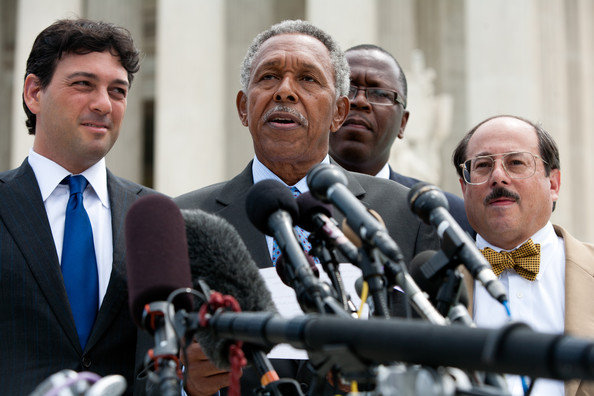The Court today disagrees, though it cannot settle on areason why. JUSTICE ALITO, joined by three other Jus- tices, advances two theories—that the expert’s summary ofthe Cellmark report was not offered for its truth, andthat the report is not the kind of statement triggering the Confrontation Clause’s protection. In the pages thatfollow, I call JUSTICE ALITO’s opinion “the plurality,” because that is the conventional term for it. But in all except its disposition, his opinion is a dissent: Five Justices specifically reject every aspect of its reasoningand every paragraph of its explication. See ante, at 1 (THOMAS, J., concurring in judgment) (“I share the dissent’s view of the plurality’s flawed analysis”). JUSTICE THOMAS, for his part, contends that the Cellmark reportis nontestimonial on a different rationale. But no other Justice joins his opinion or subscribes to the test he offers.
That creates five votes to approve the admission of the Cellmark report, but not a single good explanation.
So based on Kagan’s dissent in Wlliams v. Illinois, is Justice Alito’s opinion in McDonald v. Chicago really a dissent?
Let’s see.
Justice Alito, joined by Roberts, Scalia, and Kennedy held that the Second Amendment is incorporated through the Due Process Clause. However, five Justices (Stevens, Thomas, Ginsburg, Breyer, Sotomayor) “rejected every aspect of its reasoning and every paragraph of its explication.” Both in McDonald and Willimas, Justice Thomas offers a different rationale–“no other Justice joins his opinion or subscribes to the test he offers.” Thus, McDonald creates 5 votes to incorporate the Second Amendment, but not a single good explanation.
So is Alito’s plurality a dissent? What say you Justice Kagan?
I would say that “in all except its disposition, [Alito’s McDonald] opinion is a dissent.”
Update:
And oh snap:
The plurality thuswould countenance the Constitution’s circumvention. If the Confrontation Clause prevents the State from getting its evidence in through the front door, then the State couldsneak it in through the back. What a neat trick—but really, what a way to run a criminal justice system. No wonder five Justices reject it
And Kagan calls Thomas’s opinion an “essay.”
The plurality also argues, as a “second, independent basis” for its decision, that the Cellmark report falls outside the Confrontation Clause’s ambit because it is nontestimonial. Ante, at 3. The plurality tries out a number ofsupporting theories, but all in vain: Each one either conflicts with this Court’s precedents or misconstrues thiscase’s facts. JUSTICE THOMAS rejects the plurality’s viewsfor similar reasons as I do, thus bringing to five the number of Justices who repudiate the plurality’s understanding of what statements count as testimonial. See ante, at 1, 12–15. JUSTICE THOMAS, however, offers a rationale of his own for deciding that the Cellmark report is nontestimonial. I think his essay works no better. When all is said and done, the Cellmark report is a testimonial statement
Is that supposed to be a sly insult? I’m not sure.
And this is pretty sharp:
But JUSTICE THOMAS’s approach grants constitutional significance tominutia, in a way that can only undermine the Confrontation Clause’s protections. . . . Indeed, JUSTICE THOMAS’s approach, if accepted, wouldturn the Confrontation Clause into a constitutional geegaw—nice for show, but of little value.
Kagan’s summary is vicious:
What comes out of four Justices’ desire to limit Melendez-Diaz and Bullcoming in whatever way possible, combined with one Justice’s one-justice view of those holdings, is—to be frank—who knows what. Those decisions apparently nolonger mean all that they say. Yet no one can tell in what way or to what extent they are altered because no proposed limitation commands the support of a majority.
The better course in this case would have been simply tofollow Melendez-Diaz and Bullcoming. Precedent-based decisionmaking provides guidance to lower court judgesand predictability to litigating parties. Today’s plurality and concurring opinions, and the uncertainty they sow,bring into relief that judicial method’s virtues. I would decide this case consistently with, and for the reasons stated by, Melendez-Diaz and Bullcoming. And until a majority of this Court reverses or confines those decisions,I would understand them as continuing to govern, in every particular, the admission of forensic evidence.
Update: Is there a Justice Thomas exception to the Marks rule. No one took seriously his concurring opinion in McDonald? It doesn’t look like anyone will buy his concurring opinion in Williams. These CT 4-1-4 splits seem to go be controlled by the plurality.

